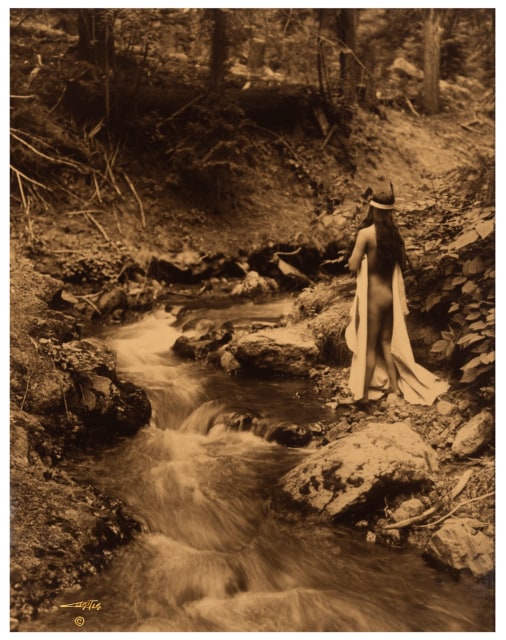Edward S. Curtis (1868–1952) was an American photographer, ethnologist, and documentarian, renowned for his monumental work chronicling the lives and cultures of Native American tribes. Born in Whitewater, Wisconsin, Curtis developed a passion for photography at an early age. After establishing a successful portrait studio in Seattle, he shifted his focus to the American West, determined to capture the lives and traditions of Indigenous peoples before they disappeared under the pressures of modernity.
In 1906, financier J.P. Morgan provided Curtis with funding to pursue his ambitious project, The North American Indian, a 20-volume series combining photographs and ethnographic text. Over three decades, Curtis photographed more than 80 tribes, meticulously documenting their customs, ceremonies, and daily lives. His process involved immersive fieldwork, often building trust and collaborating closely with Indigenous communities.
While his work has been criticized for romanticizing Native cultures and staging certain scenes, Curtis's commitment to preserving a visual and written record of these societies remains widely acknowledged. His images, characterized by their striking composition and sensitive portrayal, have become iconic representations of Native American heritage.
Beyond his photographic legacy, Curtis also produced a silent feature film, In the Land of the Head Hunters (1914), featuring members of the Kwakwaka’wakw people. His contributions extended to the preservation of oral histories and traditional songs, offering future generations a rare glimpse into the diverse cultural landscapes of Indigenous America.
Despite financial hardship and the waning popularity of his work in his later years, Curtis's photographs have since gained renewed appreciation for their artistic and historical value. Today, The North American Indian is considered one of the most comprehensive visual records of Native American life, solidifying Curtis's enduring legacy as a pioneering figure in both photography and ethnography.
